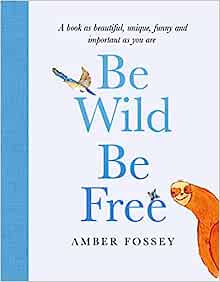In literature, some of the most compelling characters are those who wrestle with their demons and find ways to thrive despite their struggles. These literary outcasts often serve as a reflection on our own challenges, showing us that strength can emerge from adversity.
This post celebrates such characters – figures who embraced their struggles, found resilience in their pain, and grew into powerful, memorable forces within their narratives.
Jane Eyre (Jane Eyre by Charlotte Brontë)
Jane Eyre begins her journey as an orphaned, lonely child, enduring emotional and physical abuse at the hands of her aunt and cousins. Later, as a governess, she faces societal prejudice and heartbreak. Despite her hardships, Jane remains fiercely independent and morally steadfast. Her ability to remain true to herself, even when tested by love and loss, illustrates the strength born from perseverance and self-respect.
Takeaway: Jane’s story reminds us that integrity and self-worth can guide us through even the darkest of times.
Frodo Baggins (The Lord of the Rings by J.R.R. Tolkien)
Frodo is an unlikely hero – a humble hobbit with the monumental task of destroying the One Ring. The weight of the task takes a significant toll on his spirit, but Frodo’s persistence and moral courage carry him forward. Though scarred by his journey, Frodo ultimately triumphs, symbolizing how enduring hardships can forge inner strength and leave lasting marks of wisdom.
Takeaway: Frodo’s journey highlights that even the smallest among us can bear immense burdens and emerge as heroes.
Celie (The Color Purple by Alice Walker)
Celie’s life begins in oppression, marked by abuse and marginalisation as a poor, African-American woman in the early 20th century. Through letters, relationships, and self-discovery, she gradually claims her voice and power. By the end of the novel, Celie transforms her pain into love and self-reliance, breaking free from her oppressors.
Takeaway: Celie’s story teaches us that resilience and self-expression can lead to profound personal liberation.
Tyrion Lannister (A Song of Ice and Fire by George R.R. Martin)
Born into a powerful family, Tyrion is marginalised due to his physical stature and underestimated by nearly everyone around him. Despite this, he uses his wit, intelligence, and emotional resilience to navigate a world of betrayal and cruelty. Tyrion’s ability to adapt to adversity, coupled with his sharp sense of humour, make him one of the most beloved characters in the series.
Takeaway: Tyrion exemplifies how embracing one’s uniqueness can become a source of strength.
Lila Cerullo (The Neapolitan Novels by Elena Ferrante)
Lila is a brilliant, fiery character shaped by the harsh realities of her impoverished Naples neighbourhood. Though she battles internal demons and external hardships, Lila’s creativity, intelligence, and defiance shine through. Her ability to channel her struggles into moments of power and influence reflects the nuanced ways people can survive and thrive under pressure.
Takeaway: Lila shows us that even in the face of relentless challenges, passion and intellect can carve a path forward.
Victor Frankenstein’s Creature (Frankenstein by Mary Shelley)
The Creature begins as an innocent being, shunned by society due to his appearance. His rejection leads him down a path of anger and vengeance, but his story also carries profound moments of vulnerability and insight. Despite his tragic end, the Creature’s longing for love and acceptance reveals the depth of his humanity.
Takeaway: The Creature’s journey portrays the importance of compassion and understanding, both for ourselves and others.
Neville Longbottom (Harry Potter series by J.K. Rowling)
Neville starts his journey as an awkward, often-overlooked student at Hogwarts. Over time, he grows into a courageous leader who plays a critical role in the fight against Voldemort. His transformation from timid to tenacious showcases how perseverance and self-belief can turn perceived weaknesses into extraordinary strengths.
Takeaway: Neville’s growth reminds us that quiet strength often carries the loudest impact.
Lisbeth Salander (The Girl with the Dragon Tattoo by Stieg Larsson)
Lisbeth is a brilliant hacker and fierce individualist who overcomes systemic abuse and personal trauma. Her determination and resourcefulness enable her to expose corruption and seek justice, despite facing significant obstacles.
Takeaway: Lisbeth’s journey shows the power of reclaiming personal power in the face of injustice.
Final Thoughts
The strength of literary outcasts lies in their ability to transform adversity into personal growth. Their stories remind us that struggle does not define us – it is how we respond to that struggle that shapes our character. Whether we find resilience in solitude, courage, or despair, these characters offer valuable lessons for navigating life’s challenges.
Who are your favourite literary outcasts? Let us know in the comments below! .



